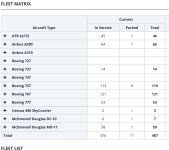Speaking of electric truck and cars, and now the soaring cost of electricity and gas, over the last 2 years I have been setting up my house to be very self sufficient, as possible getting ready for retirement which seems to be getting very close, very quickly

.
As a basic rule, anything in a house the creates a huge amount of heat, or a huge amount of cold is the most expensive user of energy.
With this in mind I did the following.
Install 1 x 6.5kW solar system two years ago.
This proved to be very good right from the start, and during the mild seasons, our energy costs were immediately reduced by 80%.
During winter & summer, this system helped but of course fully ducted air conditioning knocked it around.
So then I replaced the older air conditioning plant with a new 5 star rated inverter system which immediately used 60% less power and is smart phone app operated.
I replaced our older fridge with a new modern 5 star rated one, which by the plug in power meter I have used up to 85% less power than our 10 year old fridge.
I also sold our upright freezer, as the new fridge has a larger freezer capacity than the 20 year old one.
So 85% better refrigeration cost, and the deletion of a 20 year old high energy using freezer has made a massive difference.
I then replaced the old gas storage hot water system which unlike off peak electricity, simply reheated when the thermostat deemed so, with a new 6 star instantaneous gas hot water system, which only heats the water whenever the tap is turned on.
I estimate this has saved up to 90% in gas usage and cost, the unit that just bolts onto the wall was quite a bit more expensive than a gas storage tank, and the gas supply to the unit had to be upgraded, and an outdoor PowerPoint had to be installed, but it will pay for its self in no time. Not to mention, it simply does not work or use gas even while we are away, there is no pilot light anymore, as it is electric spark ignition.
We entertain quite a lot with our family, and our house is always the meeting place as our kids live in smaller flats & town houses.
We have had a Skope shop shop size fridge in the garage for over 20 years.
This fridge can hold four cases of beer per shelf, and It has 5 shelves. It also holds massive amounts of food for the big events like Christmas and Easter etc.
We used to turn it on and off based on when it was needed, but the old refrigeration unit being a commercial fridge used horrid amounts of power.
I contacted Skope, and they offered to trade in my 20 year old fridge for a new shop fridge that is now 90% more efficient then the old one.
It is also controlled by an app on my phone.
I can alter the temp, turn the lights on or off, or turn the fridge on or off if needed.
It has pre set refrigeration levels as this shop fridge can do many things.
The levels are;
Food 1-4 deg c
Chocolate 13-17
Flowers 3-6
Drinks 3-5
Beer 1-4
White wine 8-11
Red wine 15-19
Or a manual setting of your choice.
You type in the current amount of power you pay per kW/hour and the app will tell you how much per day the fridge costs to run.
It even shown me how many times the door is opened, and tells you the effect it has on the daily running cost.
If we are having people over, 24 hours before when food goes into the fridge I set it to the food or beer setting.
When not entertaining and there are only drinks in the fridge, I have it set to the flower setting.
The app shows me that the fridge will use between 15 cents for day set to flower, and 40 cents per day set to food, with multiple door openings per hour.
That’s pretty smart.
Also, when required, the entire refrigeration plant which is top mounted, can be fully removed, and replaced with a new, or Skope refurbished modular unit in 10 minutes. The old refrigeration unit was fully integrated into the fridge case/body itself so if any major component failed, it was a major disassembly procedure and repair over many days.
I also (a couple of years ago now) replaced nearly 50 x 55w halogen lights, with 10w LED lights.
That’s 2750W of power usage that will now only consume 500W of power usage if all turned on at once.
I also removed our entire 25 year old R2 rated roof insulation, and replaced it with new modern R6 insulation.
As the solar system proved successful since day one, 12 months ago I installed a second 6.5kW system.
Even panel technology has improved since the install of the first system to the second. System one had 24 panels to produce a total of 6.5kW, the second system has 18 to do the same thing. There are now a total of 42 panels.
It was also $400 cheaper.
An immediate result was our energy bills were always in credit, so a great result.
However in NSW we are limited to how much power we can sell back into the grid.
So our system was generating more than we use (during the mild seasons) and couldn’t sell all of this back to the grid.
So along came a battery system, that I have of course been studying for years, that is modular in 2.5kW, 5.5kW and 10kW modules that I felt would suit us, and the pricing was right.
To be able to use this power we can not sell, I installed a 5.5kW battery.
This system comes with smart app operation and monitoring. So I could see what it was doing right from the moment it was switched on.
The app will show me the immediate change and usage of power, the moment something is turned on or off in the house. The app also shows you your daily CO2 Reduction, virtual trees planted amount, self consumption amount, self sufficiency amount, total feed into the grid in kW/h and total grid consumption, if any.
It also shows me exactly what the panels are generating at a glance, and is a fully live reading. That means I can see exactly how the panels are performing, and you can see the immediate drop if the sun ducks behind a cloud.
But the good item it shows you is you enter in the total investment of the batteries (and solar cost if you like) and it calculates your total profit against investment.
At present of course it’s in negative, but it will eventually show you the positive amount you are in front of your original investment.
Our energy provider (AGL) provides daily usage and costs via their website, so I can check our usage the day after it is used. The graph shows what I’ve bought, and what I have sold via the grid. A really handy thing to see how you are going.
After a few weeks of monitoring, I have seen that the 5.5kW battery will be depleted in some circumstances and what is being used around 4am in the morning, then the system reverts to grid supply.
However due to the 42 panels, the fully depleted battery would be back to 100% by around 9:30am on a sunny day, so all power after that is sold into the grid, or runs the entire house fully.
We also only use the washing machine, and dishwasher during the day now, as the power is feee.
I then decided to install a second 5.5kW battery to cater for this, and now at 4am, the battery is roughly between 30-40% remaining out of its potential of 11kW.
The system deems that the discharge should not be less than 10% of its total capacity, which is what the manufacturer states as to ensure longevity of the battery packs themselves.
I have yet to see how this system will go in the full heat of summer, with the AC running, but the new AC system being so energy efficient, and the the solar system already runs the AC system fully on a sunny day, however it will be interesting to see how the battery stands up over night.
I already feel I will need to program the timing of the AC system during the night.
All in all, over a period of a couple of years, I have set ourselves up to be running off grid during the off seasons and with a minimal charge in peak seasons.
It has been a very good learning process, and an enjoyable project.
Watch this space





